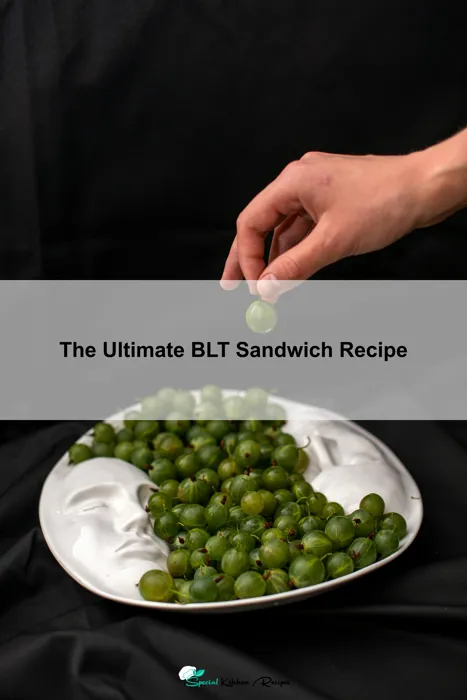The humble BLT, a seemingly simple combination of bacon, lettuce, and tomato, holds a surprisingly rich history and cultural significance far exceeding its unassuming appearance. While pinpointing its exact origin is difficult, the sandwich’s popularity exploded in the United States during the early to mid-20th century, coinciding with the rise of readily available processed bacon and mass-produced sliced bread. Its simplicity and satisfying combination of savory, salty, and refreshing elements quickly cemented its place as an American classic, transcending socioeconomic boundaries and becoming a staple in lunchboxes, diners, and backyard barbecues alike.
Though no single inventor can be credited, the BLT’s rise to fame is inextricably linked to the evolving culinary landscape of America. The introduction of commercially produced bacon in the late 19th century was a pivotal moment, making this key ingredient more accessible to the average consumer. Similarly, the widespread adoption of sliced bread in the 1920s streamlined the sandwich-making process, further contributing to its enduring appeal. Interestingly, variations of the BLT, featuring similar combinations of ingredients, can be traced back even further, hinting at a much longer, albeit less defined, history.
Today, the BLT remains incredibly popular. Online searches for BLT sandwich recipe number in the millions annually, demonstrating its continued relevance in the modern culinary world. Its enduring appeal lies not just in its ease of preparation, but in its adaptability. From variations featuring different types of bread, gourmet cheeses, and unique sauces, to its role as a canvas for culinary creativity, the BLT continues to evolve while retaining its core identity. The perfect BLT, however, remains a subject of much debate, with passionate arguments surrounding the ideal bread, the optimal bacon crispiness, and the best type of tomato to use. This recipe aims to provide a definitive answer, delivering the ultimate BLT experience.
Ingredients and Measurements
Crafting the ultimate BLT requires careful attention to ingredient quality and precise measurements. Using fresh, high-quality ingredients will significantly elevate the flavor profile of your sandwich. Don’t skimp on the good stuff!
For this recipe, we’ll be making two generous BLT sandwiches. Feel free to adjust the quantities proportionally if you need more or less.
Bread: 4 slices of your favorite bread. We recommend using a hearty, crusty bread like sourdough or country bread. The texture will hold up well to the juicy tomatoes and creamy mayonnaise. Aim for slices that are about ½ inch thick.
Bacon: 6-8 slices of thick-cut bacon. Choose high-quality bacon with a good balance of fat and lean meat for optimal crispiness and flavor. Avoid overly lean bacon, as it may become dry and brittle when cooked.
Lettuce: 4-6 large leaves of crisp lettuce. Iceberg lettuce is a classic choice for BLTs, but you can also experiment with Romaine or butter lettuce for a slightly different flavor profile. Ensure your lettuce is thoroughly washed and dried before use.
Tomatoes: 2 large, ripe tomatoes. Choose beefsteak or heirloom tomatoes for their rich flavor and juicy texture. Avoid using tomatoes that are mealy or overly watery. Slice the tomatoes about ¼ inch thick.
Mayonnaise: 2-4 tablespoons of mayonnaise. Use a high-quality mayonnaise with a good flavor. The amount you use depends on your personal preference. Some prefer a generous amount, while others prefer a lighter spread.
Optional additions: Consider adding other elements to enhance your BLT. A thin spread of Dijon mustard adds a nice tang, while a sprinkle of salt and freshly cracked black pepper enhances the overall flavor. Consider adding avocado slices for extra creaminess and healthy fats.
Important Note: The success of your BLT hinges on the quality of your ingredients. Fresh, ripe tomatoes and crispy bacon are key to achieving that perfect BLT experience. Don’t be afraid to experiment with different types of bread and lettuce to find your perfect combination!
Equipment List
Crafting the perfect BLT requires more than just quality ingredients; the right tools are essential for achieving optimal results. This equipment list details everything you’ll need, from prep to presentation, ensuring a seamless and satisfying sandwich-making experience.
Knife Selection: You’ll need at least two knives. A sharp chef’s knife (8-10 inches) is crucial for efficiently slicing the tomatoes and bacon. A smaller paring knife (3-4 inches) will be handy for trimming the ends of the bread and handling smaller tasks like removing any blemishes from the lettuce. Invest in high-quality, sharp knives; dull knives will crush ingredients instead of cleanly slicing them.
Cutting Board: A large, sturdy cutting board is a must. Choose a material that’s easy to clean and won’t dull your knives, such as wood or high-density polyethylene (HDPE). Avoid glass cutting boards, as they can chip and damage your knives. A separate smaller cutting board for the tomatoes is recommended to avoid cross-contamination of flavors.
Bacon Pan or Baking Sheet: For perfectly crisp bacon, a bacon pan with a rack is ideal, allowing the fat to render away from the bacon. Alternatively, a baking sheet lined with parchment paper works well. Avoid overcrowding the pan; this will steam the bacon instead of crisping it. Allow for adequate space between bacon slices.
Mixing Bowls: At least two medium-sized mixing bowls will be helpful. One for preparing the bacon and the other for assembling the sandwich components. This keeps everything organized and prevents accidental mixing of flavors. Use separate bowls for washing and preparing different ingredients to maintain hygiene.
Spatula or Tongs: A sturdy spatula is essential for flipping the bacon and assembling the sandwich. Tongs are also useful for handling the hot bacon safely. Choose a spatula that’s heat-resistant and flexible enough to maneuver easily.
Sandwich Press (Optional but Recommended): While not strictly necessary, a sandwich press or panini maker will elevate your BLT to the next level by perfectly toasting the bread and melting the mayonnaise, creating a warm, gooey, and flavorful experience.
Serving Plate: Finally, a nice serving plate will present your culinary masterpiece to its full potential. Consider a plate that complements the rustic nature of the BLT.
Bacon Preparation (including cooking time and achieving desired crispness)
The key to a truly exceptional BLT lies in perfectly crisp bacon. This isn’t just about cooking it until it’s cooked; it’s about achieving that ideal balance of crispiness and chewiness, with a satisfying snap.
We recommend using center-cut bacon for its even thickness and superior crispness. Start with 6-8 slices of thick-cut bacon (approximately 1/2 pound). The quantity can be adjusted based on your preference and the size of your sandwich.
Avoid overcrowding the pan. Overcrowding will steam the bacon instead of crisping it. For best results, cook the bacon in batches. Line a large skillet (cast iron is ideal for even heat distribution) with a single layer of bacon slices. Do not add any oil to the pan; the bacon fat will render sufficiently.
Cook the bacon over medium heat. This allows for even cooking and prevents burning. Using a lower heat will result in chewy bacon, while high heat may lead to burning before it crisps properly. The ideal cooking time is usually between 8-12 minutes, but this will vary depending on the thickness of your bacon and your preferred level of crispness. Begin checking for doneness around the 8-minute mark.
As the bacon cooks, use tongs to gently flip the slices, ensuring even browning on both sides. Look for a deep golden brown color and a slight curling of the edges. If you prefer extra-crispy bacon, continue cooking for another 2-3 minutes, keeping a close eye to prevent burning.
Once the bacon reaches your desired level of crispness, remove it from the pan and place it on a wire rack set over a paper towel-lined plate. This allows excess grease to drain, preventing a soggy sandwich. The wire rack prevents the bacon from becoming soggy by allowing air circulation.
Professional Tip: For perfectly even cooking and consistent crispiness, consider using a bacon press. This will ensure that the bacon cooks evenly throughout, leading to a more satisfying crunch. If you don’t have a bacon press, a heavy skillet lid will suffice.
Allow the bacon to cool slightly before assembling your BLT. This will prevent the bread from becoming overly soft from the heat of the bacon.
Tomato Preparation (Mentioning Ripeness Selection and Slicing)
Selecting the perfect tomatoes is paramount to a truly exceptional BLT. Avoid tomatoes that are overly firm and lack color, indicating immaturity. Look for plump, vibrantly red tomatoes with smooth skin and a slight give when gently squeezed. The aroma should be sweet and slightly tangy. Avoid tomatoes with bruises, blemishes, or soft spots. For the best flavor, choose heirloom varieties or locally grown tomatoes whenever possible, as these often possess a superior taste profile.
The quantity of tomatoes you’ll need depends on the size of your sandwiches. For two large BLTs, I recommend using approximately 2 medium-sized tomatoes (about 1 pound total). If you are using smaller tomatoes, you may need to adjust the quantity accordingly. Remember, the tomatoes are a star ingredient in the BLT, so don’t be shy with them!
Once you have selected your perfect tomatoes, it’s time to prepare them for slicing. Begin by washing the tomatoes thoroughly under cold running water. This removes any dirt or pesticides that may be present on the skin. Pat them dry with a clean kitchen towel to prevent excess moisture from making your sandwich soggy.
Now, for slicing. The thickness of your tomato slices is a matter of personal preference, but I recommend slicing them about ⅛ inch thick. This thickness provides a good balance between substantial tomato presence and preventing the sandwich from becoming overly juicy. Thicker slices can be a bit cumbersome to eat, while thinner slices might disappear into the other ingredients. Using a sharp knife will ensure clean, even slices and prevent the tomatoes from getting crushed or bruised.
To achieve the most visually appealing and flavorful slices, slice the tomatoes horizontally from stem to base. Avoid slicing through the core, as this often contains seeds and a slightly watery consistency. If you prefer, you can remove the core beforehand, but it’s not strictly necessary. Arrange the slices neatly on a plate or in a bowl until you’re ready to assemble your sandwiches. Remember to avoid over-slicing the tomatoes too far in advance, as they can lose moisture and become less flavorful. Prepare them just before assembling the sandwiches for the best results.
Lettuce Preparation (mentioning washing and drying)
Crisp, clean lettuce is paramount to a truly exceptional BLT. We’ll be using approximately 4-5 large leaves of iceberg lettuce, or the equivalent in another variety like romaine or butter lettuce, depending on your preference and the size of your sandwiches. The key is to achieve perfectly washed and dried leaves, free from any grit or excess moisture that can make your sandwich soggy.
Washing your lettuce is crucial. Begin by separating the lettuce leaves and discarding any that show signs of wilting, browning, or insect damage. Place the leaves in a large bowl and fill it with cold water. Swirl the leaves gently in the water for about 30 seconds to dislodge any dirt or debris. You may need to repeat this process a couple of times, especially if your lettuce is particularly dirty. Make sure to thoroughly rinse the leaves under running cold water after each soak.
After washing, the next step is equally important: thorough drying. Excess water will ruin your sandwich, creating a soggy mess. Avoid simply shaking the leaves, as this will not remove enough water. Instead, use a salad spinner. Place the washed lettuce leaves into the spinner and spin vigorously until most of the water is removed. Alternatively, if you don’t have a salad spinner, you can gently pat the leaves dry using several layers of clean paper towels. This method requires more time and effort, but it’s an effective alternative.
Once your lettuce is thoroughly dried, you’re ready to assemble your BLT. Avoid over-drying, as it can make the lettuce brittle. Aim for leaves that are completely free of visible water droplets but still retain their freshness and crispness. For a truly restaurant-quality BLT, consider gently tearing the larger leaves into smaller, more manageable pieces before adding them to your sandwich. This makes it easier to eat and ensures even distribution of the lettuce throughout the sandwich.
Pro Tip: For an extra layer of freshness, you can briefly soak your lettuce in an ice bath for a few minutes before washing and drying. This will help to revive any slightly wilted leaves and enhance their crispness.
Bread Selection and Toasting
The bread you choose is paramount to a truly exceptional BLT. The perfect slice should be sturdy enough to hold the juicy tomatoes and crispy bacon without becoming soggy, yet tender enough to provide a pleasant textural contrast. Avoid overly soft breads like brioche or challah, as they’ll likely fall apart under the weight of the fillings. Instead, opt for heartier options that can stand up to the task.
Recommended Bread Types:
- Sourdough: Its tangy flavor complements the savory bacon and sweet tomatoes beautifully. A good sourdough provides a robust texture that holds up well.
- Country White: A classic choice, country white bread offers a slightly denser crumb than standard white bread, providing a good balance of texture and flavor.
- Whole Wheat: For a healthier option, whole wheat bread adds a nutty flavor and wholesome texture. Choose a loaf with a reasonably tight crumb to prevent excessive sogginess.
- Texas Toast: For a truly indulgent BLT, Texas toast offers a thick, buttery, and incredibly satisfying base. Use slices approximately ½ inch thick.
Toasting Techniques: The toasting process is crucial for achieving the perfect BLT. Under-toasted bread will be limp and absorb the moisture from the fillings, while over-toasted bread will be hard and unpleasant. Aim for a golden-brown color with a slight crispness.
Method 1: Toaster Use a standard toaster, setting the dial to a medium-brown setting. Toast each slice for approximately 1-2 minutes, depending on your toaster and desired level of crispness. Watch carefully to prevent burning.
Method 2: Skillet or Pan For a more even toast and enhanced flavor, toast the bread in a lightly oiled skillet over medium heat. Cook for 2-3 minutes per side, or until golden brown and slightly crispy. Use a low-to-medium heat to prevent burning and ensure even toasting.
Method 3: Oven Preheat your oven to 350°F (175°C). Arrange bread slices on a baking sheet and bake for 5-7 minutes, or until golden brown and crisp. This method is ideal for toasting multiple slices simultaneously and achieves a consistently even result. Keep a close eye on the bread to prevent over-toasting.
Important Note: Regardless of your chosen toasting method, allow the toasted bread to cool slightly before assembling your BLT. This prevents the bread from becoming too soft from the moist ingredients.
Experiment with different bread types and toasting techniques to find your perfect BLT combination. The right bread is a key ingredient to unlocking the ultimate sandwich experience!
Recommendations
For the ultimate BLT experience, we highly recommend using high-quality ingredients. Thick-cut, perfectly ripe tomatoes are key, as are crisp, smoky bacon and buttery, toasted bread. Experiment with different types of bread – sourdough, whole wheat, or even a brioche bun – to find your perfect match. Don’t be afraid to get creative with your lettuce choice; butter lettuce or romaine add a nice crunch and visual appeal.
Serving Suggestions: This sandwich is delicious on its own, but can be elevated with a side of crisp potato chips, a fresh green salad with a light vinaigrette, or a creamy tomato soup. For a heartier meal, consider serving it alongside a side of coleslaw or roasted vegetables. A refreshing beverage, such as iced tea or lemonade, complements the richness of the BLT perfectly.
Storage: For best results, consume your BLT sandwich immediately after preparation. The tomatoes can release moisture, making the bread soggy if left to sit. If you must store leftovers, separate the components (bread, bacon, lettuce, tomato) and assemble just before serving. Store the components separately in airtight containers in the refrigerator for up to 24 hours.
Complementary Dishes: A simple side of seasoned fries or onion rings adds a salty, crunchy element that enhances the BLT’s flavors. A light and bright fruit salad offers a refreshing contrast to the richness of the sandwich. For a more substantial meal, consider serving it with a bowl of creamy potato salad or a side of grilled corn on the cob.
Nutritional Information (per serving, approximate): The nutritional content of a BLT sandwich varies greatly depending on the ingredients used and portion sizes. However, a typical BLT sandwich may contain approximately 500-700 calories, with varying amounts of fat, protein, and carbohydrates. For a more precise nutritional breakdown, we recommend using a nutrition calculator and inputting the specific ingredients and quantities used in your recipe. Remember to adjust serving sizes to meet your individual dietary needs.





